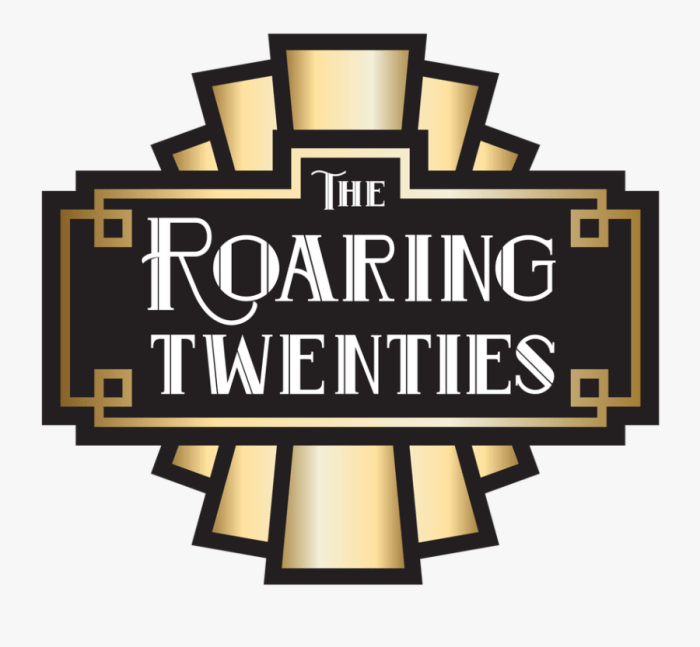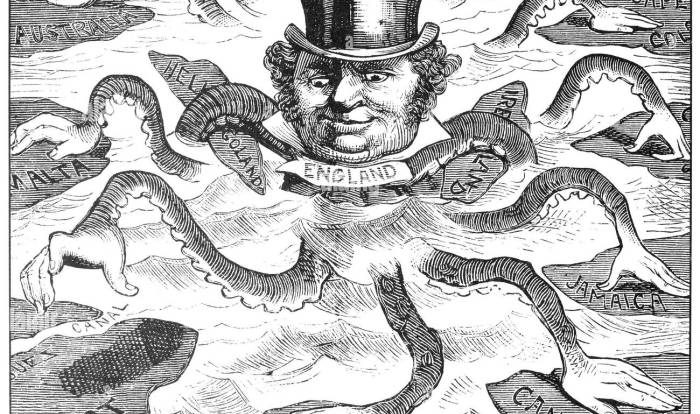Embark on a captivating journey through the Roaring 20s Webquest Answer Key, a comprehensive guide that unlocks the secrets of this transformative era. Immerse yourself in the vibrant tapestry of social, cultural, and economic changes that shaped the decade, leaving an enduring legacy on American society.
From the economic boom and technological advancements to the rise of flappers and the Harlem Renaissance, this guide provides an in-depth exploration of the Roaring Twenties, shedding light on its complexities and lasting impact.
The Roaring Twenties
The Roaring Twenties, a decade of profound transformation, unfolded in the aftermath of the Great War. This era witnessed a surge of social, cultural, and economic change that reshaped the fabric of American society. The post-war prosperity fueled an unprecedented economic boom, while the loosening of social norms gave rise to a vibrant cultural landscape.
The Roaring Twenties was a time of great economic prosperity. The United States emerged from the war as the world’s leading economic power. The war had stimulated industrial production, and the post-war years saw a continuation of this growth. New industries, such as automobiles and aviation, flourished.
The stock market boomed, and many Americans became wealthy. The economic boom led to a rise in consumer spending. People bought cars, radios, and other new products. They also spent money on entertainment, such as movies and jazz music.
Social and Cultural Changes
The Roaring Twenties was also a time of great social and cultural change. The war had led to a breakdown of traditional values. Women had gained new freedoms during the war, and they continued to assert their independence in the postwar years.
They won the right to vote in 1920, and they began to enter the workforce in large numbers. The flappers, young women who defied social conventions, became symbols of the new era. They wore short skirts, bobbed their hair, and smoked cigarettes.
The Roaring Twenties was also a time of great cultural change. Jazz music became popular, and it influenced other forms of music, such as blues and country. New forms of dance, such as the Charleston, became popular. People also began to go to movies in large numbers.
The movies provided a new form of entertainment, and they helped to shape American culture.
Timeline of Key Events
- 1920: The 19th Amendment is passed, granting women the right to vote.
- 1925: The Scopes Trial takes place, pitting science against religion.
- 1929: The stock market crashes, signaling the beginning of the Great Depression.
Economic Prosperity and Innovation
The Roaring Twenties witnessed an unprecedented economic boom and technological advancements that transformed American society. This period of prosperity was fueled by several factors, including the post-World War I economic recovery and the rise of new industries.
The post-war period saw a surge in demand for consumer goods, leading to a boom in manufacturing and production. The rise of new industries, such as the automobile and aviation industries, created new jobs and wealth. Mass production techniques, pioneered by Henry Ford, reduced production costs and made consumer goods more affordable for the average American.
Impact of Mass Production and Consumerism
The combination of mass production and consumerism had a profound impact on American society. The availability of affordable goods led to a rise in consumer spending and a shift towards a more materialistic culture. Advertising played a significant role in shaping consumer desires, creating a cycle of demand and consumption that fueled economic growth.
However, the economic boom also led to disparities in wealth and income. While some industries flourished, others declined, leading to job losses and economic hardship for some segments of the population.
Social and Cultural Changes
The Roaring Twenties witnessed a surge of social and cultural transformations that challenged traditional values and norms. These changes were fueled by economic prosperity, technological advancements, and a desire for liberation from the constraints of the past.
One of the most iconic symbols of the Roaring Twenties was the emergence of the flapper culture. Flappers were young, modern women who defied traditional gender roles and embraced a lifestyle of freedom and self-expression. They wore short skirts, bobbed their hair, and indulged in activities such as smoking, drinking, and dancing.
The Rise of Jazz Music
The Roaring Twenties also saw the rise of jazz music, a vibrant and energetic genre that originated in African American communities. Jazz quickly gained popularity among both white and black audiences, becoming a symbol of the cultural melting pot that was the Roaring Twenties.
Jazz musicians such as Louis Armstrong, Duke Ellington, and Bessie Smith became household names, and their music inspired a new generation of artists.
Changing Roles of Women and Minorities
The Roaring Twenties also brought about significant changes in the roles of women and minorities. Women gained the right to vote in 1920, and they began to enter the workforce in increasing numbers. African Americans experienced a period of cultural and artistic flourishing known as the Harlem Renaissance, but they continued to face discrimination and segregation.
These social and cultural changes had a profound impact on traditional values and norms. The flapper culture challenged conventional notions of femininity, while the rise of jazz music broke down racial barriers. The changing roles of women and minorities paved the way for a more diverse and inclusive society, although much progress still needed to be made.
Art and Literature of the Roaring Twenties

The Roaring Twenties witnessed an explosion of creativity in art and literature, reflecting the social and cultural transformations of the era. Art Deco, the Harlem Renaissance, and the Lost Generation emerged as distinct artistic and literary movements that shaped the decade’s cultural landscape.
Art Deco
Art Deco, an influential design style, emerged in the 1920s, characterized by its geometric forms, bold colors, and streamlined aesthetics. This style found expression in architecture, furniture, fashion, and graphic arts. Art Deco represented the optimism and modernity of the era, symbolizing the embrace of technological advancements and urban life.
Harlem Renaissance
The Harlem Renaissance was a cultural and intellectual movement centered in the Harlem neighborhood of New York City. This movement celebrated African American culture and identity, producing a wealth of literature, music, art, and theater. Writers like Langston Hughes and Zora Neale Hurston explored themes of race, identity, and social justice, challenging prevailing stereotypes and showcasing the richness of Black culture.
Lost Generation
The Lost Generation was a group of American writers who came of age during World War I. They were disillusioned by the war’s horrors and expressed a sense of alienation and skepticism in their works. Ernest Hemingway, F. Scott Fitzgerald, and Gertrude Stein were prominent figures of this movement, known for their modernist writing style and exploration of themes of loss, despair, and the search for meaning in a rapidly changing world.These
artistic and literary movements reflected the social and cultural changes of the Roaring Twenties. Art Deco embodied the era’s optimism and embrace of modernity, while the Harlem Renaissance celebrated African American identity and culture. The Lost Generation expressed the disillusionment and alienation felt by many in the aftermath of World War I.
Together, these movements left an indelible mark on the cultural legacy of the decade.
The End of the Roaring Twenties
The Roaring Twenties came to an abrupt end with the stock market crash of 1929, which triggered the Great Depression, a devastating global economic crisis that lasted for over a decade.
Factors Leading to the End of the Roaring Twenties
- Overspeculation in the stock market:Rampant speculation and buying on margin led to artificially inflated stock prices, creating a bubble that was bound to burst.
- Weak banking system:Banks made risky loans and lacked sufficient capital reserves, making them vulnerable to a downturn.
- Agricultural crisis:Overproduction and falling crop prices led to a decline in farm income, which weakened the economy.
Impact of the Great Depression
The Great Depression had a profound impact on the global economy and society:
- Economic devastation:The stock market crash wiped out billions of dollars in wealth, leading to widespread unemployment, business failures, and bank closures.
- Social upheaval:Unemployment and poverty led to social unrest, homelessness, and a rise in crime.
- Political instability:The Great Depression undermined faith in governments and contributed to the rise of authoritarian regimes.
Legacy of the Roaring Twenties, The roaring 20s webquest answer key
Despite its abrupt end, the Roaring Twenties left a lasting legacy on American society and culture:
- Economic and technological innovation:The period saw the rise of new industries, mass production, and consumer culture.
- Social and cultural change:The Roaring Twenties witnessed a loosening of social norms, the emergence of flappers and jazz culture, and the growing influence of mass media.
- Political and economic challenges:The Great Depression highlighted the need for government intervention in the economy and social welfare programs.
Query Resolution: The Roaring 20s Webquest Answer Key
What were the key factors that contributed to the economic prosperity of the Roaring Twenties?
The post-World War I economic recovery, the rise of new industries, and the widespread adoption of mass production and consumerism were major factors driving the economic boom of the Roaring Twenties.
How did the Roaring Twenties impact social and cultural norms?
The decade witnessed a significant shift in social and cultural values, with the emergence of the flapper culture, the rise of jazz music, and the changing roles of women and minorities challenging traditional norms and conventions.
What were the major artistic and literary movements that emerged during the Roaring Twenties?
Art Deco, the Harlem Renaissance, and the Lost Generation were prominent artistic and literary movements that flourished during the Roaring Twenties, reflecting the social and cultural changes of the era.
